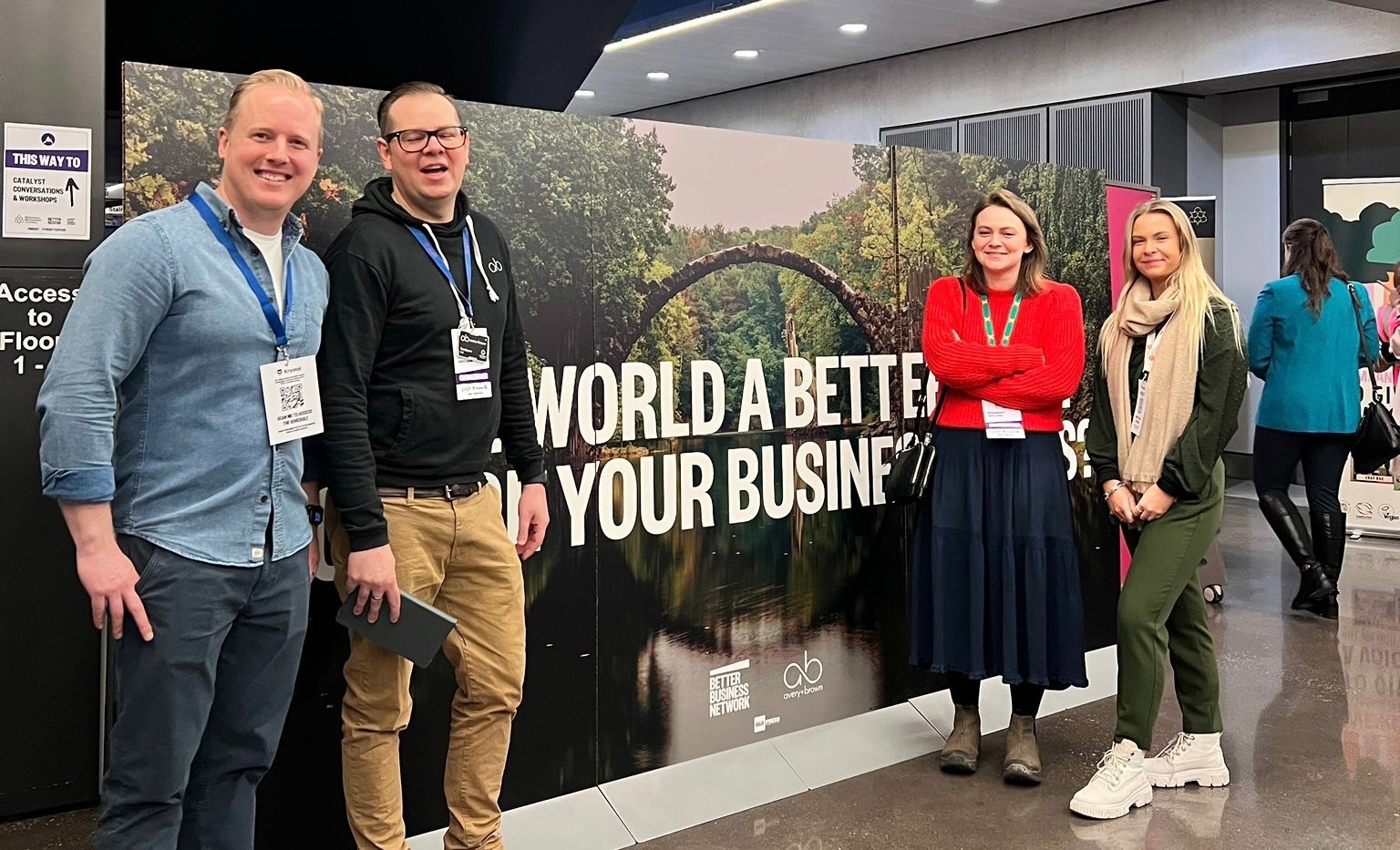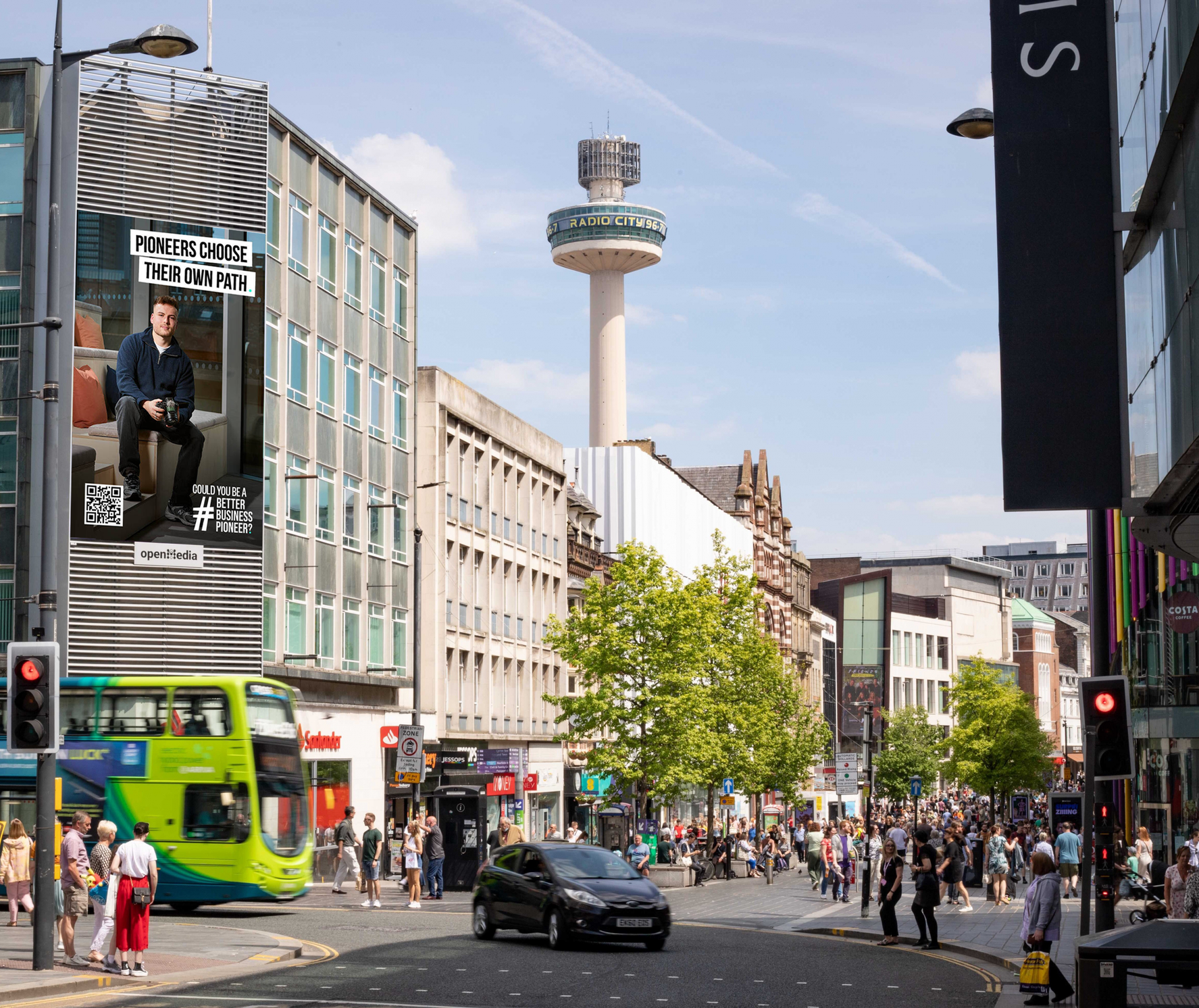Becoming a B Corp: insights and tips from our recent certification
In this blog we interview Beth, our Brand and Design Lead, on the process of becoming a B Corp. We get into the details of how the process worked and what tips and insights she has for other small businesses thinking of certifying.
QUEstion 01
What did you know about the B Corp before you started the process?
Probably less than I should! To me – as with many people I would imagine – the B Corp recalled the little logos I’d seen on food packaging and was synonymous with brands like Patagonia and – less positively – BrewDog. In fact, I’d watched the BBC documentary, The Truth about BrewDog, in the weeks before we kickstarted the project, which isn’t exactly a glowing review for B Corp in general! It felt only right that they lost their status in the December of that year. B Corp committing to this actually helped convince us that the process had integrity. Walking away from one of its biggest champions is no small act.
All this to say, when it came to the process itself, I knew very little. I’d heard a lot of daunting anecdotes about how much work was involved. I’m the Strategy and Design Lead at Avery & Brown, so while I was interested in ethical business and had some of the tools of the trade, I had no real experience in implementing sustainable business practice – only what I’d picked up along the way. Perhaps my lack of familiarity helped, I basically just dived straight into the assessment and didn’t let myself get overwhelmed at the outset.
QUEstion 02
What about when you first opened the B Corp Impact Assessment – what was your initial thinking and approach for tackling it?
The first thing I did was just run through the whole assessment, familiarising myself with the questions and seeing how many I could answer off the bat. Then I went back over in more detail and created a giant document that basically broke down everything into a RAG system – so red for things I couldn’t answer and didn’t have evidence for, amber for things I could answer but needed to build up the evidence, and green for things that we could easily evidence and answer. I think the Impact Assessment interface is a little overwhelming, so it’s useful to create some kind of tracking process that gives clear oversight to anyone involved – whether it’s on Word or Excel, or some kind of project management software.
I turned this document into a priority list based on resource intensity and a project timeline with sign off dates for everything to keep us on track. We’re only a small team (even smaller when we started the process), but because I was mainly working solo it was vital to involve the Russ and Tim throughout, so they had oversight of any new policies and processes.
Then I just got to work gathering and producing all the evidence we needed – from energy usage to maternity leave policies. The three of us (Russ, Tim and I) had bi-weekly meetings to review my progress and resolve outstanding queries.
You can submit the assessment before you’ve gathered all the evidence for your answers, which is worth doing because there’s a long wait between submitting and moving to the verification stage. We submitted in November 2022, but didn’t publish our
Impact Report
until February and continued to work on things like our behavioural competencies framework up until April. I think we moved into the next stage some time in May, which was when we were required to provide this information.
QUEstion 03
What was your personal experience of the process – which bits did you find most interesting or boring?
I actually enjoyed quite a lot of the process… I mean I can imagine that a lot of people would find it incredibly boring to write a load of policies. I’m not a lawyer or HR practitioner, so I went looking for examples of best practice online and then took relevant elements and frameworks and reformatted them for Avery & Brown.
While policy writing took its toll at times – writing a health and safety policy for a company that is office-based and service-based isn’t thrilling – on the other hand, something like the behavioural competencies framework was a brilliant project to work it. It was something I’d actually been researching with my brand strategy hat on in the previous months, so I was keen to test it out internally.
It’s basically a method for standardising professional development for skills that aren’t technical or job-specific – so it looks at things like critical thinking and client management and sets standards for different levels of experience and skill. In a simple framework you might have junior, senior and managerial. If you’re ticking all the boxes in your level, it’s clear you’d be a good candidate for a promotion, or if there’s areas you need to improve you can set SMART goals against them in the same way you can for job-specific KPIs. It’s a brilliant tool for both employee and manager because it sets a fair and consistent standard that justifies an internal promotion or the lack thereof.
Later in the year, we were hired to facilitate an internal culture piece for a client, and I was able to use this framework within the project. So it was really cool to see the B Corp process intersecting with my day job as a strategist and as a manager.

QUEstion 04
What do you think the benefits are of completing the B Corp when your business is still in its infancy?
I think taking on the B Corp at this early stage in Avery & Brown's history was incredibly beneficial. We're only three years old and have a team of five, but I'd encourage any small business who wants to prove their credentials to serious consider doing it now for two reasons:
- It’s much easier to get to grips with the process when you have a relatively small team and simple structure.
Things like carbon footprints are easier to calculate, there’s less bureaucracy when it comes to getting sign off for a policy, and you know who to speak to about certain things. I can’t begin to imagine how complicated it must have been for a company like Coutts to undertake the process! As your company grows and you re-certify, naturally things will change and there will be additional demands, but you won’t be starting from scratch.
- It sets you up for the future.
When done with integrity, the B Corp process pulls you up to a higher standard; ensuring a proactive approach to risk and opportunities. Many small companies get by without codes of conduct or expenses policies, but it leaves them open to massive reputational or financial risk. Having easily accessible policies and standardised procedures ensures the business is protected, that we offer fair treatment of stakeholders, and generally embeds good governance into the core of Avery & Brown.
It wouldn't be fair not to include the cons of doing it at such an early stage, although I'd argue they're far outweighed by those two positives.
- The process is resource intensive and there’s a general perception that small businesses can’t dedicate the necessary time to it. However, I’d argue that it’s balanced out by the relative simplicity of doing while you’re still small.
- There are some areas where you may lose points because you just don’t have the financial resources. For example, we can’t offer the extensive maternity pay or private health insurance of some larger companies – but we do know it’s something we want to look at in the future, and the B Corp process helped identify these priorities.
question 05
Finally, can you share your top tips for other businesses interested in applying?
- Speak to people
Asking other companies how they found the process and how they evidenced certain questions is a good way to feel less overwhelmed. One of our clients had recently certified so I sat down with the project lead for half an hour and mined her for information! If nothing else, it was reassuring to see someone who’d come out the other side.
- Set deadlines
The size and scope of the process can feel formidable, and it’s easy to let it drag on. We got to a point where we just decided to submit our initial application, which then forced us to get the rest of the evidence together and fulfil some of the promises we’d made. But remember, once you've submitted you can't change your answers!
- Get ahead of the game
Two of the most useful pieces of “evidence” we included were our impact report and our emissions certification from Planet Mark. Having these (and making them publicly available on our website) meant we could point to them for multiple questions. If you certify, you’ll need to start publishing an impact report every year anyway, so it’s not a bad idea to get started straight away. If you're interesting in finding out more about Avery & Brown's impact reporting service, just get in touch!
- Get inspired
If you’re overwhelmed by having to write a maternity policy from scratch, do some online research. I wouldn’t bother with free templates as they’re usually incredibly basic, instead check out examples of best practice and adapt them as necessary. In particular, lots of public institutions like universities and local councils publish their policies online.
- Don’t worry about the interview
In the final stage, you attend a short virtual call with your B Corp analyst. In my mind, this took the terrifying form of a PhD viva crossed with PM’s Question Time, but turned out to be incredibly relaxed. In fact, our analyst was basically on the hunt to get us more points, so she asked us a few questions and pointed out a way we could boost our score in certain areas that we hadn’t considered relevant to us. The whole process only lasted about 30 minutes for us (although this does vary) and helped us boost our score to well over 100.
- Be patient
You will have to wait up to 6 months before you hear anything about the next stages. One of my main frustrations was not having access to a general overview of the process and expected timelines. In part, this is because the process is becoming increasingly popular, which is always good to see. To give a rough idea, the verification process to certification took around 4 months, but all in all, the timeline from submission was more like 9 months.
Further resources
If you're interested in learning more about how to become a more sustainable business, but aren't quite ready for B Corp, we've got loads of resources to get you inspired.
- Download our Regenerative Business Mindmap for top level inspiration on doing business better.
- Check out our Impact Reporting Checklist for more detailed guidance on how to build a sustainability strategy and get prepared to publish an Impact Report.
- Check out Russ's free Impact Reporting course, where you'll learn how our top tips for an amazing impact report.
Share the love


















